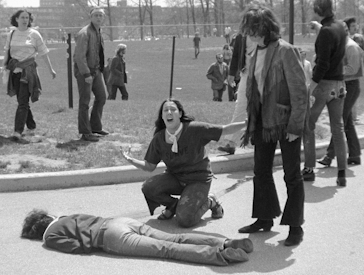On May 4, 1970, Kent State University became a terrifying place. The Ohio National Guard opened fire on a gathering of 300 student protesters, resulting in the deaths of four students and injuries to nine others. In just 13 seconds, many lives were changed, and the nation was compelled to confront its stance on student activism and its response to dissenting voices.
The Vietnam War was unpopular from the start. By 1970, the United States had been involved in the conflict for several years when President Nixon announced his plan to expand military operations into Cambodia. This announcement faced significant backlash from many Americans, leading to widespread protests among students across the nation. Kent State University was one of many campuses hosting political demonstrations and rallies. After a lively rally was dispersed, the National Guard was called in to help control the situation. Tragically, they opened fire on the student crowd, resulting in the immediate deaths of three students, while a fourth student later died at the hospital. Nine other students were injured, with one left permanently paralyzed.
The backlash following the shooting was intense and immediate. Millions of students joined the political rally movement, with over 4 million participating in a massive walkout across various universities. The shootings and the political rallies impacted public opinion, leading to increased disapproval of the United States’ efforts in the Vietnam War. Many believe that investigations suggest the presence of the National Guard at the university was unwarranted, yet no one was ever held accountable for the deaths of the four young students on May 4th. However, this tragic event forced the country to confront the unacceptable use of force in response to dissent.

